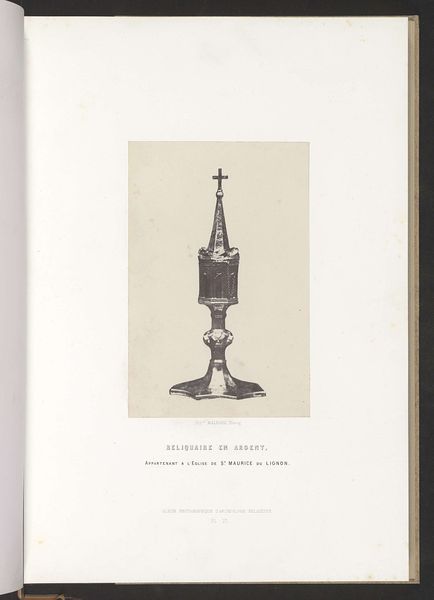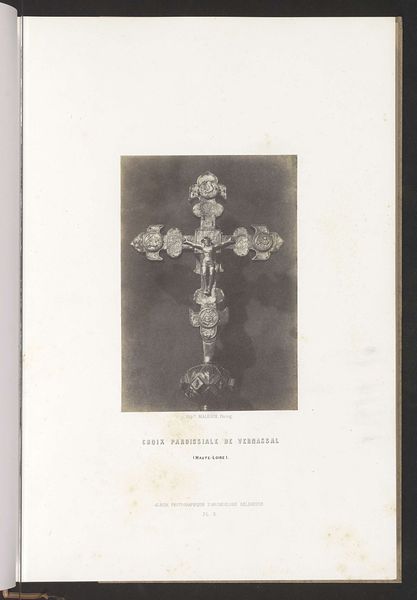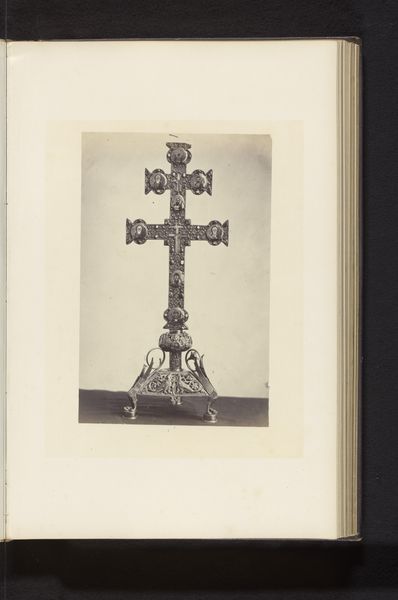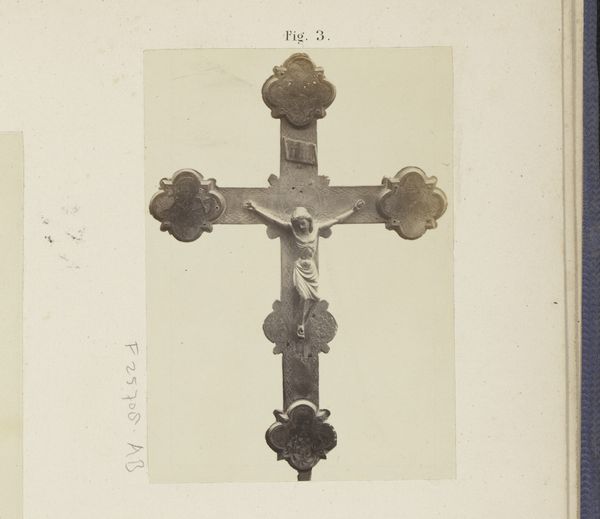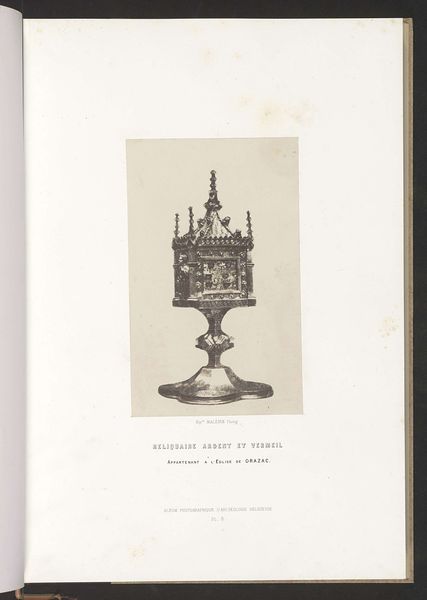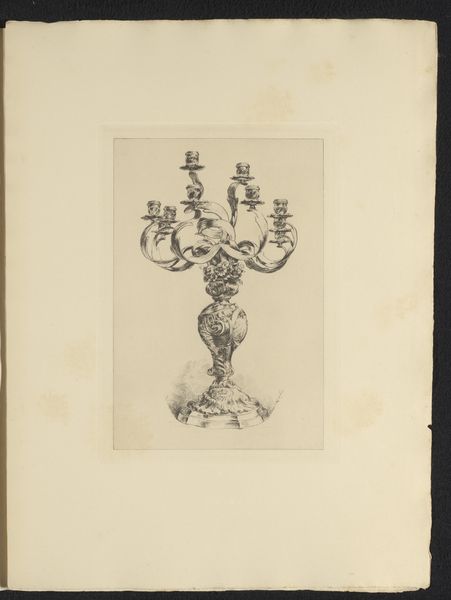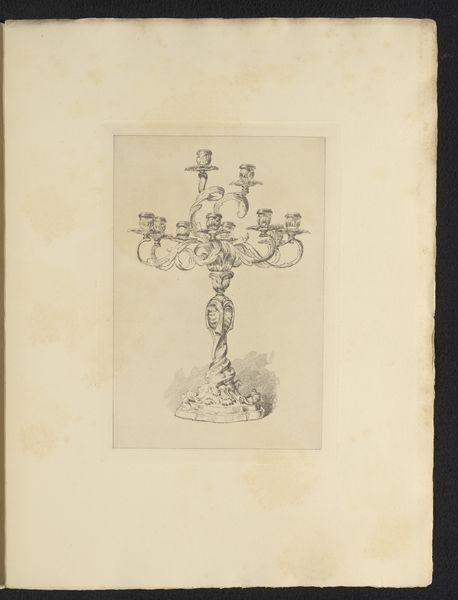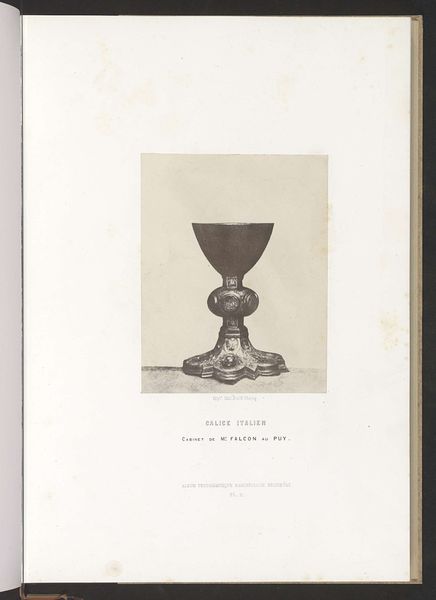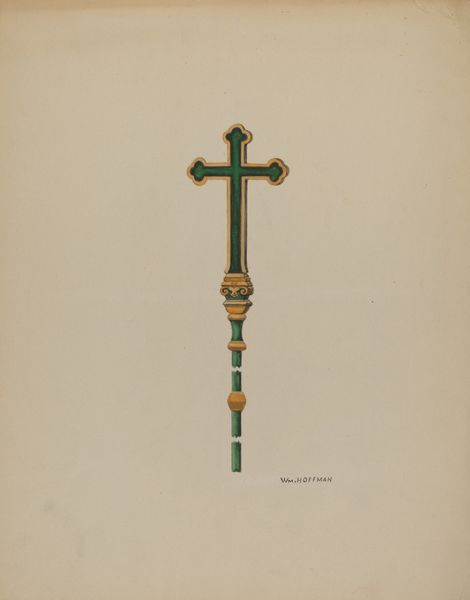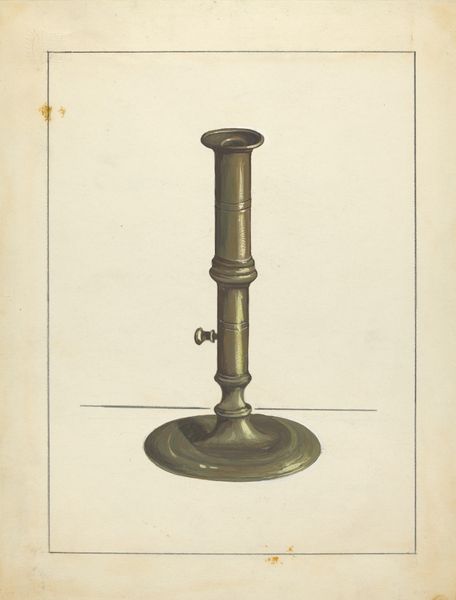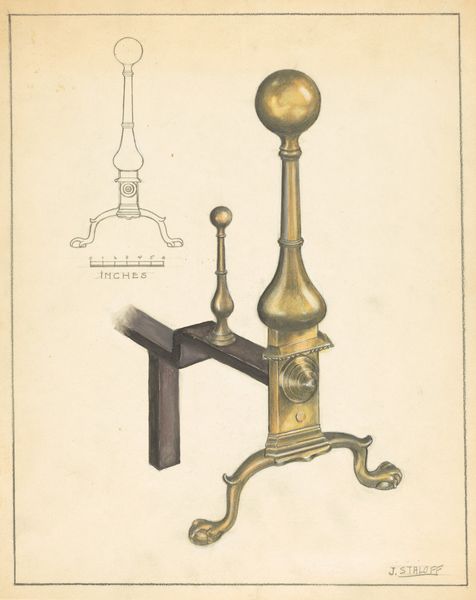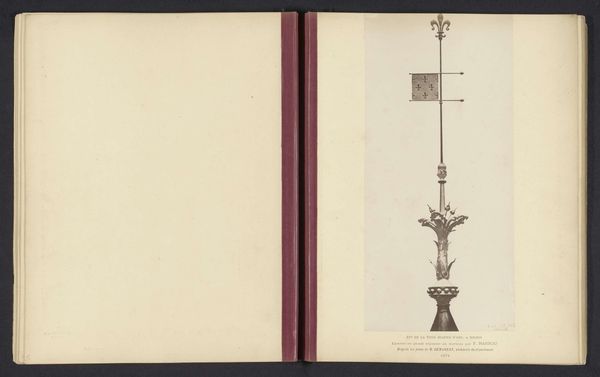
print, metal, bronze, photography
# print
#
metal
#
bronze
#
photography
#
history-painting
Dimensions: height 202 mm, width 133 mm
Copyright: Rijks Museum: Open Domain
Curator: Here we have an image titled "Kruis van de wevers, afkomstig uit Saugues", or "Weavers' Cross, from Saugues," created before 1857. Editor: My initial impression is one of striking symmetry, though tempered by the evident wear and tear on the metal. The cylindrical additions to the arms of the cross draw my eye. Curator: Precisely. The object is photographed quite formally, almost clinically. I want to focus on the repetition and geometric relationships at play. Notice how the orbs on the crucifix connect visually with the cylindrical bars jutting from the main structure. It's a compelling tension between circle and line, figure and ground. Editor: Yes, I agree. But beyond the formal qualities, I see layers of history and faith imbued in this object. This isn't just any cross; it’s a symbol deeply intertwined with the lives and labor of the weavers of Saugues. What stories could it tell of their beliefs, their community, their hardships? Curator: Good point. The cylindrical forms distributed in such ordered form is quite strange for traditional Christian crosses. It invites a reading that challenges our established view of such an established religious icon. Editor: Agreed. Each of those strange cylindrical protrusions has significance—perhaps referencing tools of their trade, spindles, bobbins… It becomes an artifact simultaneously spiritual and deeply connected to worldly concerns. What an intriguing duality. The woven textile that made the Saugues population, but then marked for them by religion as well. Curator: Perhaps even marking them differently? Highlighting them to outside parties by making such a specific, crafted modification to the cross itself? That makes one wonder whether we are speaking about spirituality alone or communal, organized identity. Editor: Perhaps that spirituality *is* that communal identity? Interesting point indeed. I like considering this symbol within the context of weaving communities, their customs, their beliefs. Curator: I’m left contemplating the interplay between form and meaning, seeing the image both as an essay in lines and shapes and a conduit to the cultural memory it embodies. Editor: And I'm more inclined to appreciate how something like this can transform from art into something more alive – a testament to enduring cultural identities, faith, and craftsmanship.
Comments
No comments
Be the first to comment and join the conversation on the ultimate creative platform.

